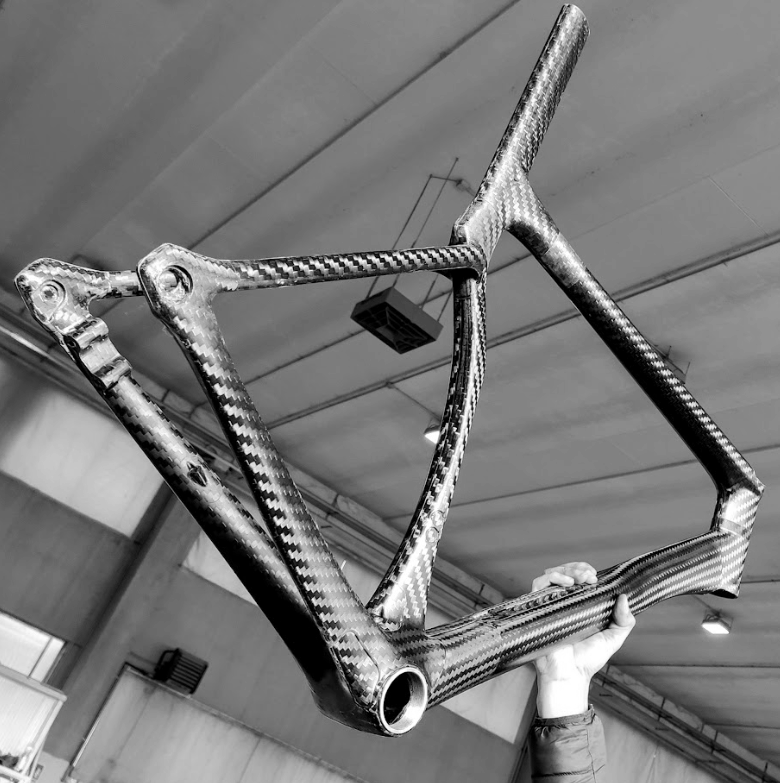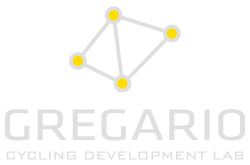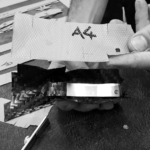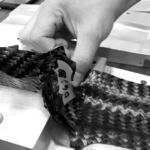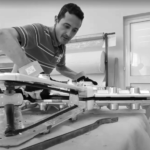Handmade
At Gregario, we have always cultivated esteem and respect for the artisanal frame-building tradition of our beautiful country, which is dedicated to a niche of timeless "classic" products, primarily made from steel, but also incorporating wrapped carbon and other techniques specific to small workshops.
So long live frame builders and anyone dedicated to preservation and pass on a noble and fascinating ars technica !
That said, we recently came across some social media posts from several respected bicycle craftspeople who, while rightly praising the (undoubted) qualities of their frames, contrast their "handmade" products with "moulded" monocoque carbon frames. On the face of it, this seems like a legitimate claim, but this narrative leads to significant misinformation about HOW such "moulded" frames are actually produced... namely, with manual work that is decidedly more demanding and onerous than any technique for joining eight tubes.
Yes, because we are not talking about printing cookies, but rather about carefully arranging over 200 fabric shapes (pre-impregnated carbon) inside a mould. These pieces range from 40 cm strips to tiny stamps, all positioned by hand according to a precise plan (the ply-book) with meticulous overlaps, folds to manage and fibre orientations to respect. And this is only half the work, because then, depending on the resin curing technology used, there are a further series of steps involved, always rigorously by hand.
In the case of autoclaves (the most common technique in Europe), it is necessary to carefully position the internal bags, close the two half-moulds without pinching anything, arrange a series of auxiliary materials, close the external bag, apply the putty to connect the internal bags with the external and so on until the whole thing is cured under high pressure and temperature. Furthermore, once the curing is finished, it's back to manual work for mould opening, part extraction, and finishing. All this with a series of possible variations we won't go into now.
In short, there is nothing more "handmade" than a carbon monocoque frame.
And what about mass production, often from Asia?
The distinction between artisanal and industrial does not lie in the material or the specific technique, but in the way work is organised. Any technique can be analysed, simplified, broken down and organised in an industrial way to try to make it economical (and therefore profitable) on a large scale. Whether it’s setting up semi-automatic welding lines or production lines where workers repeatedly place the same 3 pieces of carbon all day, the goal is always the same: to produce as many pieces at the lowest cost. This applies across all fields: there’s the artisan woodcarver creating unique pieces, and then there are mass-produced carved items made with advanced machinery.
This is where the real choice for the customer comes in: a mass-produced or a unique product? The work of many hands in a production line, or the work of a few passionate individuals?
Of course, not everyone can afford the luxury, and from this perspective, mass production isn’t inherently bad if it makes the product more accessible. However, these “serial” producers aren’t satisfied with just the low and mid-range market. They increasingly push into the high-end and luxury sectors, trying to sell a false sense of uniqueness to justify “high craftsmanship” prices on mass-produced items, leading to inflated profit margins. They’re selling an illusion, and some customers are willing to buy it.
Gregario is a hybrid workshop, combining craftsmanship with engineering, technology, and innovation. We develop original processes to explore new paths: bespoke framebuilding evolved (integral monocoque) that continues the “handmade” tradition while embracing the innovations that define modern high-end bicycles.
The technologies and processes we develop are driven by the ambition to stubbornly pursue perfection, custom-building what was previously only available in standard sizes: the integral monocoque with all its advantages: freedom of shape and design for better aerodynamics, and unlocking the full potential of the structurally sound continuous fibres, eliminating the need for bonding or other joining techniques.
Today, Gregario chooses to invest resources and energy in pursuing uniqueness and beauty, even at the expense of higher production costs. We believe that over time, the technologies developed in our workshop can be scaled and made accessible to a wider audience of cycling enthusiasts.
Instead of competing amongst small producers of “unique” pieces, we should join forces and recognise each other as kindred spirits. We are all passionate about building value through dedication to every single product we create, not mass production.
